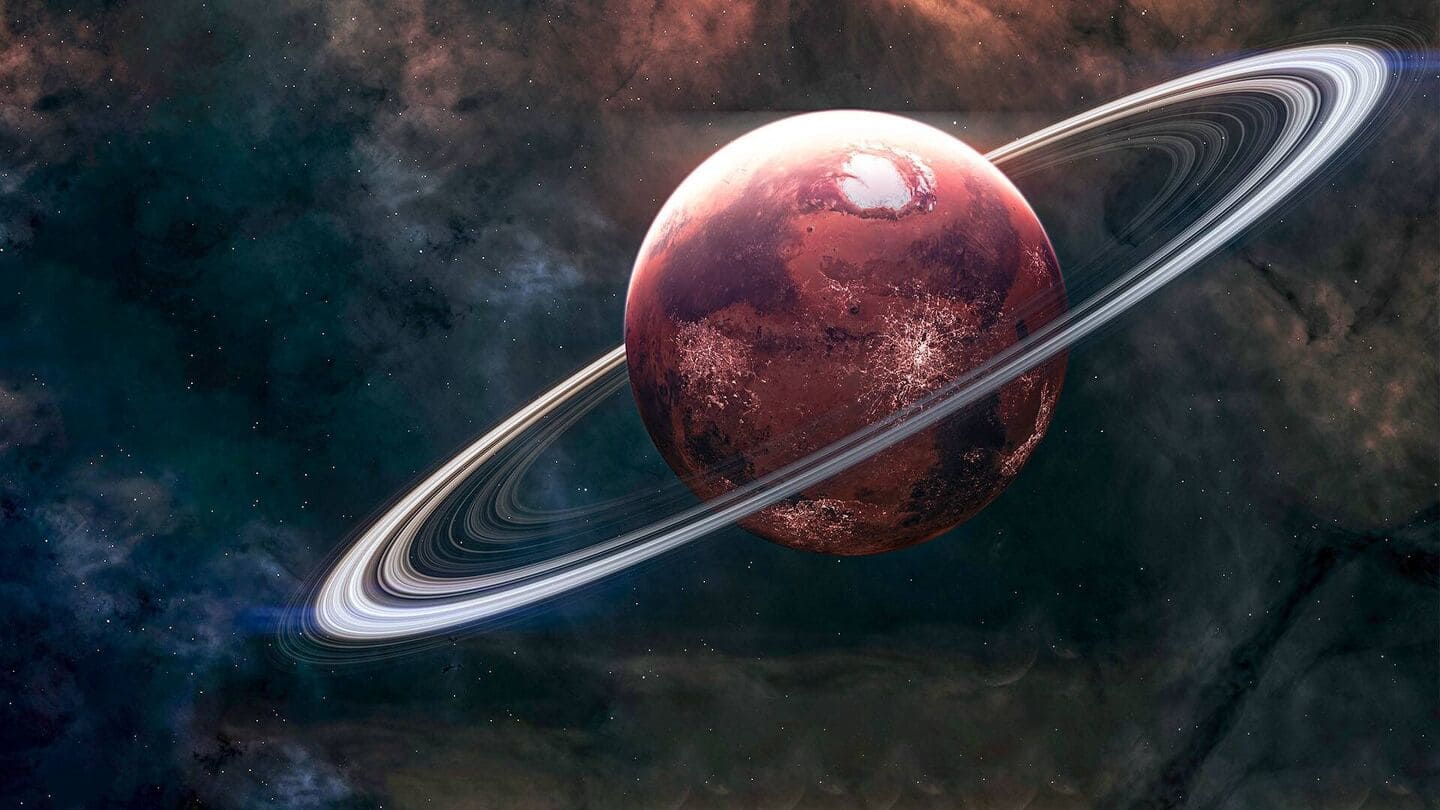
Mars once had Saturn-like rings. It might have them again
What's the story
Mars, the fourth planet from the Sun, is expected to get rings again in the next 50-70 million years. And, this is not the first time for the red planet. According to scientists, Mars has already gone through the cycle of getting rings and losing them. The next time rings will develop around Mars is due to its moon Phobos, which has been locked in a cosmic battle with the planet for billions of years.
Ring formation
Phobos's disintegration to create Martian rings
The future rings of Mars are likely to be created from the remains of Phobos. Studies indicate that Phobos will eventually break apart, leaving behind debris that will surround the planet and create new rings. This phenomenon is not exclusive to Mars. Other planets in our solar system like Jupiter, Saturn, Uranus and Neptune also boast of ring systems.
Moon's history
Phobos's history and its role in ring formation
Phobos, one of Mars's two moons, has a fascinating history linked to the planet's rings. According to a study by NASA and Purdue University, a cosmic body collided with Mars some 4.3 billion years ago, scattering debris around the planet which eventually clumped together over millions of years to form Phobos. This process is cyclical. Phobos regularly breaks apart creating temporary rings before reassembling into a smaller moon each time.
Moon's demise
Phobos's fate and impact on Mars
Phobos is slowly being pulled toward Mars by the planet's gravity. Once it crosses a certain distance, called the Roche limit, the planet's tidal forces will tear Phobos apart. David Minton and Andrew Hesselbrock from Purdue University estimate this has happened roughly three to seven times in Martian history. This cycle of disintegration and reformation plays a key role in understanding planetary ring formation processes.